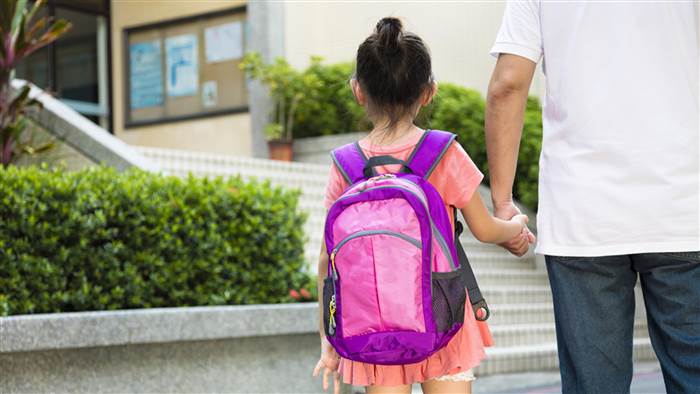Improper Use of Backpacks Threatens School-Age Children
June 14
With the opening of schools, backpacks, which are widely used in primary and secondary schools, especially for children between the ages of 12-18, bring along many problems. For this reason, it is important to provide school-age children, and therefore parents, with the necessary training on the correct selection and carrying of backpacks from early ages, in terms of protecting children, especially girls, from back and low back pain.
Backpacks put a strain on the spine and muscles in school-age children, causing muscle tension and poor posture. This situation affects the posture of the child negatively and causes back and low back pain. Studies have shown that the incidence of back and low back pain in school-age children is 70 percent, and the risk of low back pain in advanced ages increases in those who have low back pain at a young age. Although there is no data showing that structural spine diseases such as scoliosis are caused by heavy backpacks, these problems that may develop later are mostly due to the weight of the bag that children carry and their carrying in an inappropriate position. In addition, since the duration of carrying the bag is an important factor, wheeled and rickshaw backpacks should be preferred, especially for primary school children.
Although there are other factors that threaten this age group such as bad posture, sitting in front of the computer for a long time and incorrectly, unsuitable school desks, the total weight of the backpack should not exceed 10-15 percent of the child's weight. This corresponds to 3-5 kilograms for primary school children and approximately 6-8 kilograms for high school students. If the materials it carries are over this weight, it should be reduced by talking to the school administration. In a study, it was revealed that the group of students with heavy backpacks complained about 50 percent more back pain than the group with light backpacks, and carrying heavy backpacks increased the risk of falling, especially falling from the stairs. In addition, it should be ensured that the weights are placed in a balanced manner in the bag, the heavy items should be gathered in the middle and the light items should be placed in a balanced manner on both sides.
When choosing a backpack;
•Shoulder straps should be wide and soft in order not to press on the nerves and negatively affect blood circulation, and light bags with waist belts should be preferred, and straps and belt should not be loose in order not to affect the center of gravity. Economic savings should not be made, quality products should be preferred.
•Back pad should be good, in thin ones, hard objects in the bag or corner ends of the book will sink into the back and disturb it.
•Backpacks should be hung on both shoulders and carried in a balanced way, it should be known that bags hanging on one shoulder increase the risk of scoliosis (curvature of the spine).
• It should be ensured that the bottom of the bag is not lower than the child's waist level, but at least 5 cm above it.
• The backpack should be checked every day, and unnecessary items and materials should be removed. In addition, the child should be shown to lift the bag by using his knees without leaning forward while picking up the bag from the ground. Families should encourage children to do sports and exercise to strengthen their neck, back and waist muscles. Students should be careful about seeing a doctor if they complain of back or low back pain or when the family suspects a curvature of the child's spine or posture disorder.
It should be taken into account that children sitting for a long time at school or at home in front of the computer can cause neck, back pain and posture disorders. For a healthy development, children should be encouraged to do regular sports.
prof. Dr. Mahir UGUR
PHYSICAL THERAPY AND ALGOLOGY (PAIN) SPECIALIST


